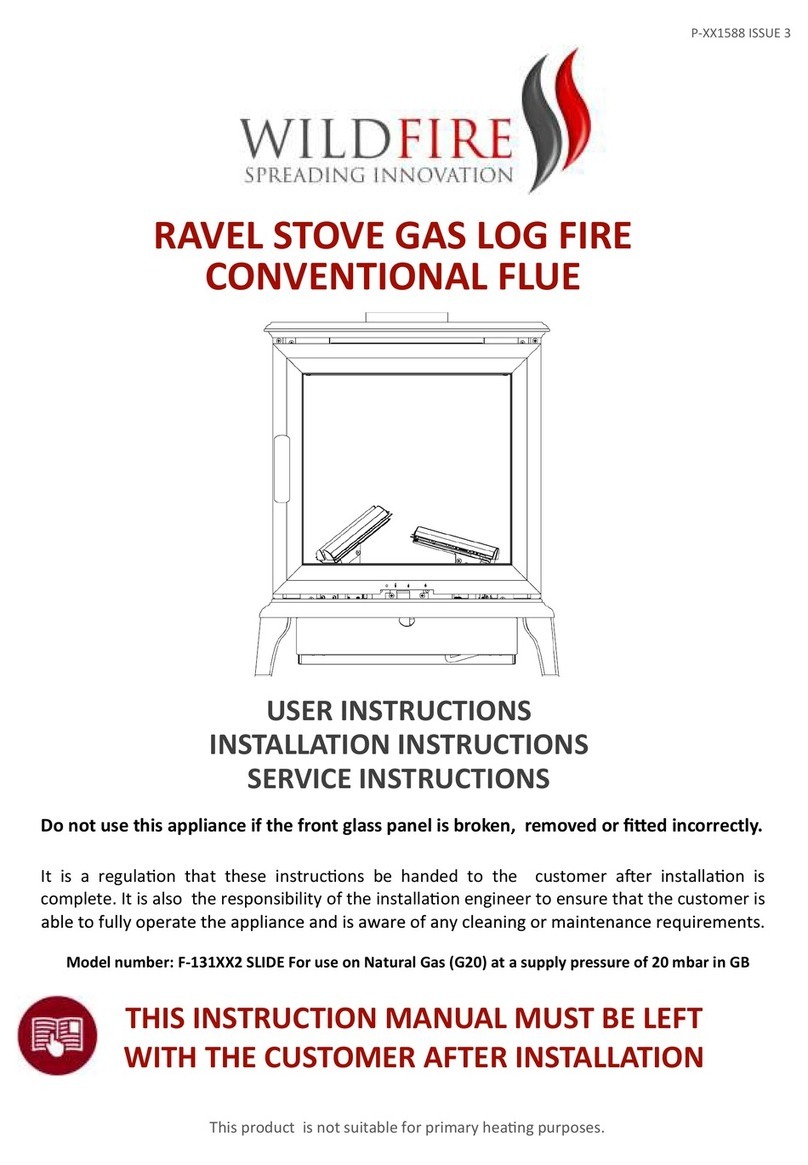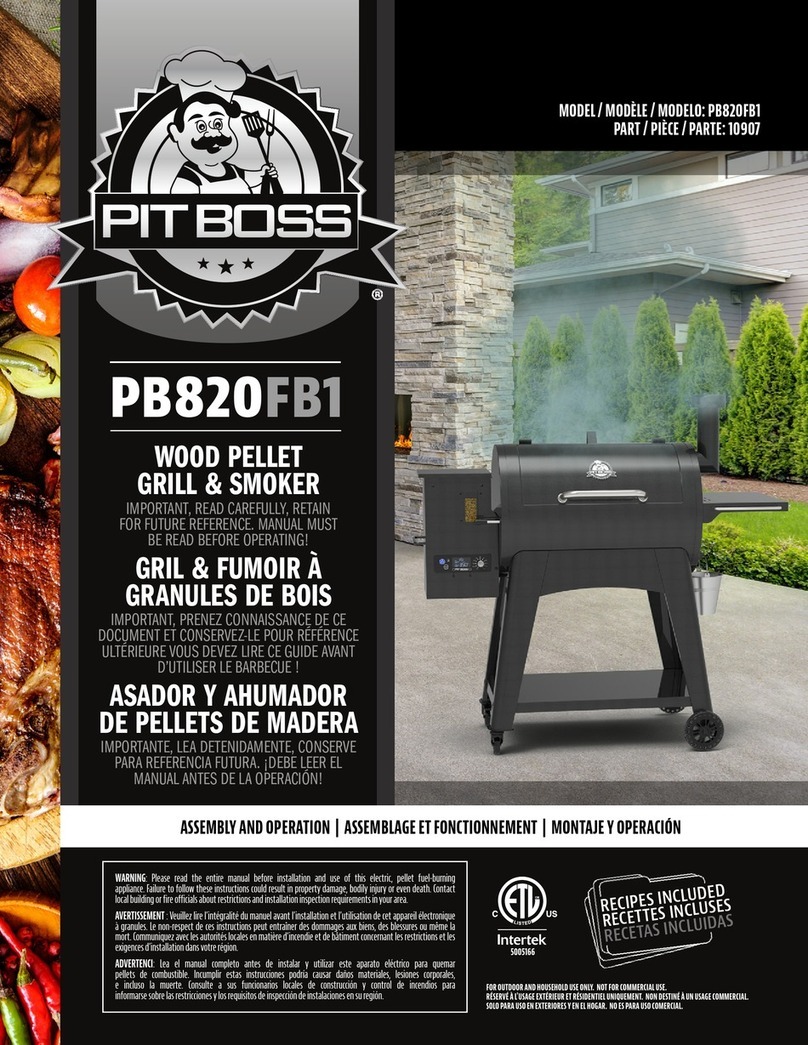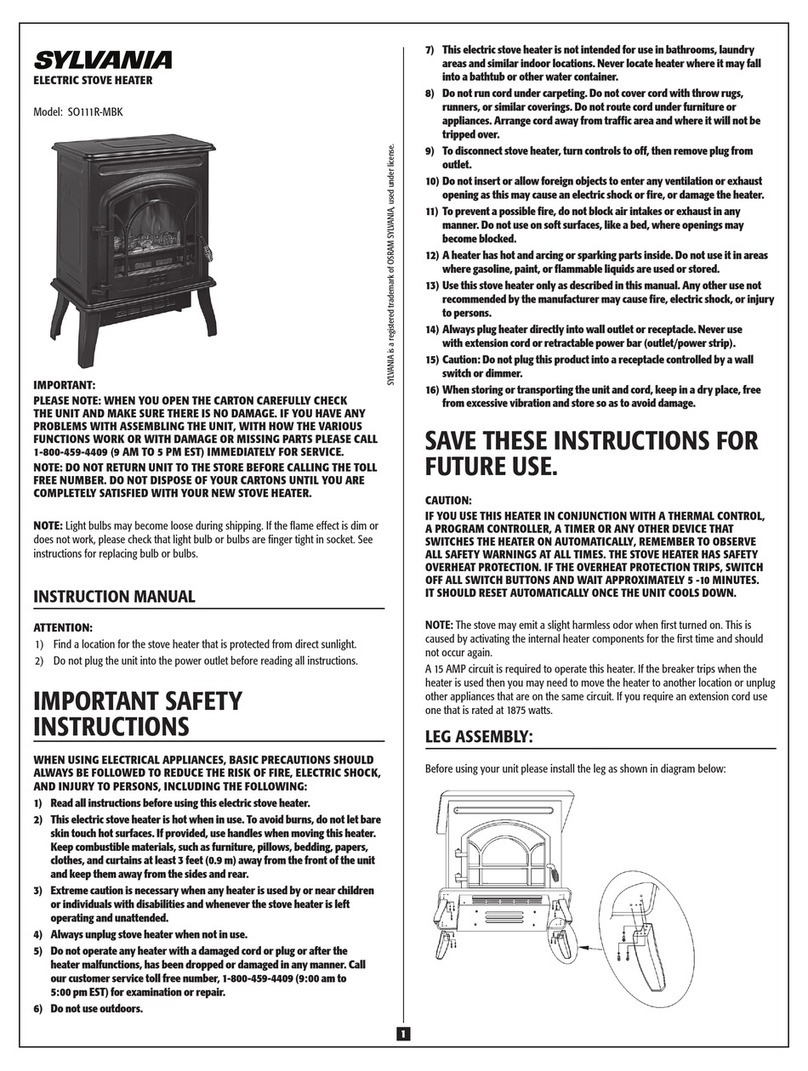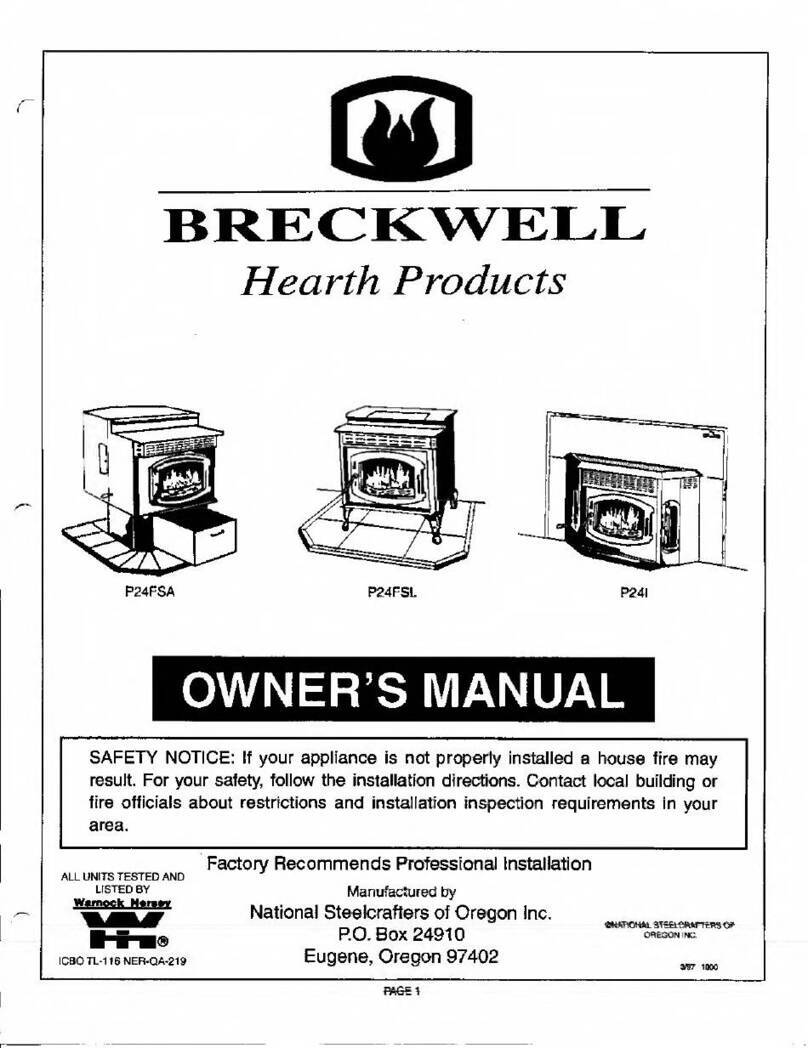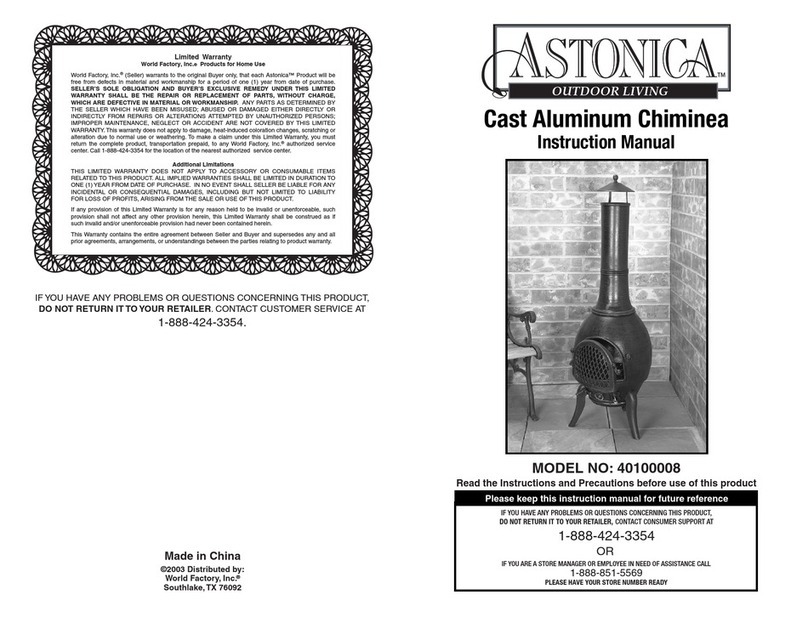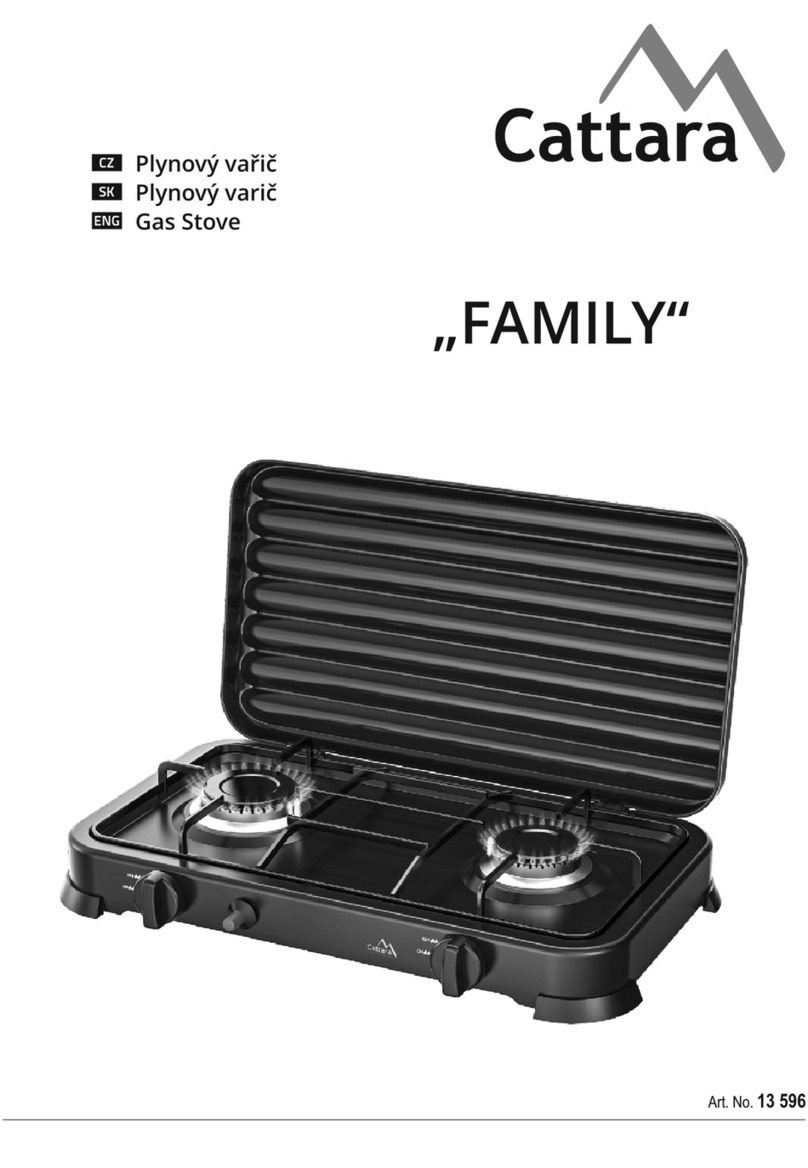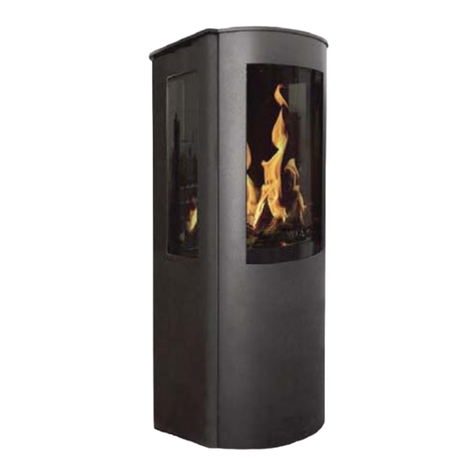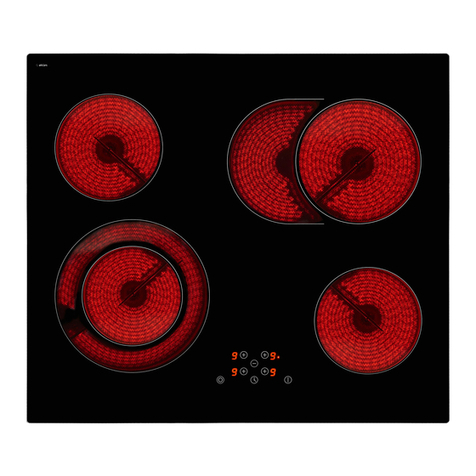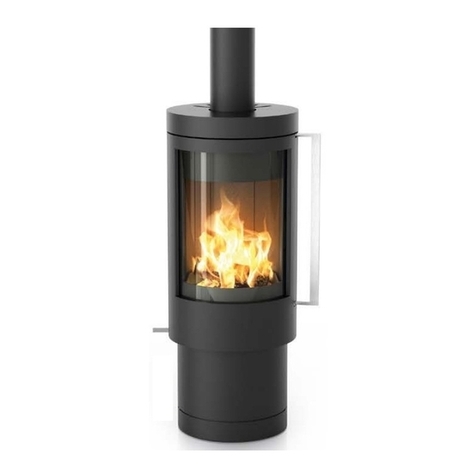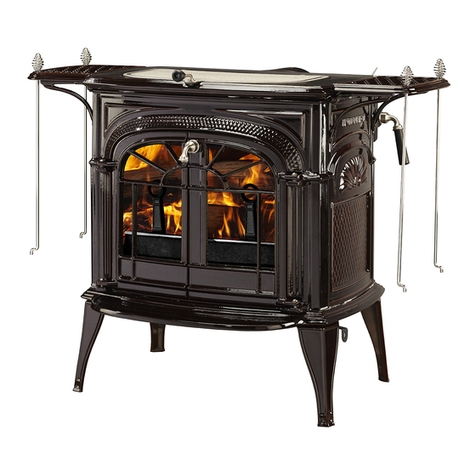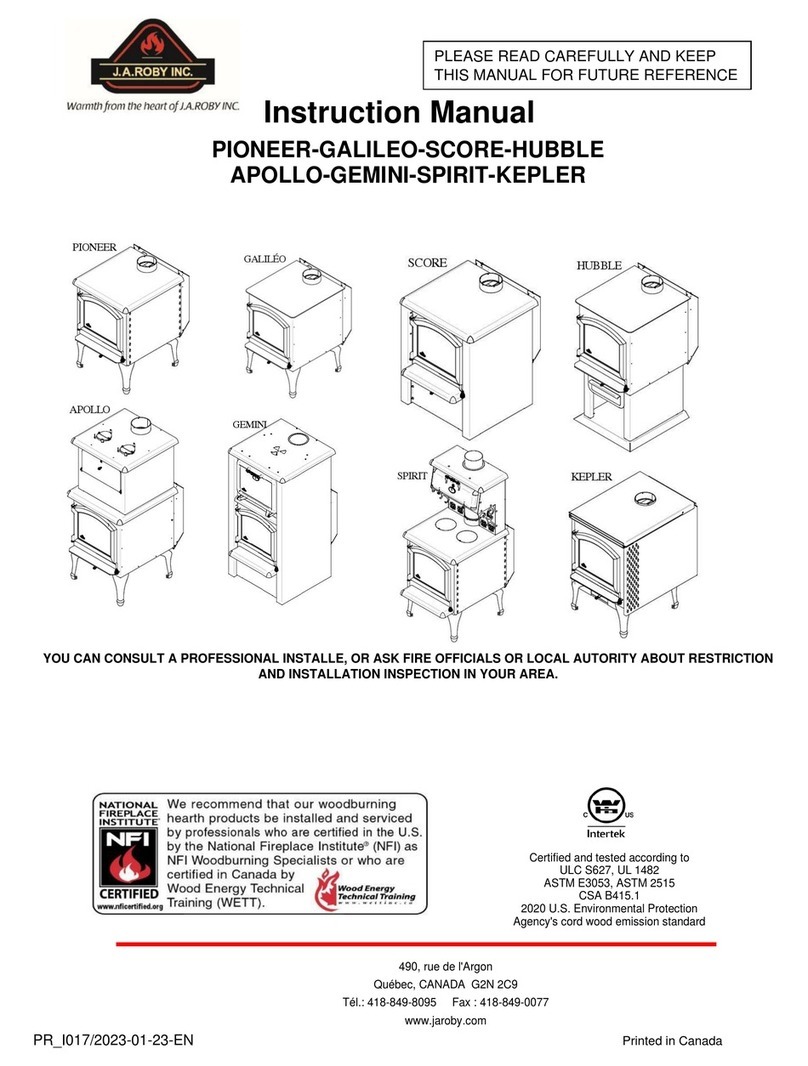Use of the oven and of the cooking area.
Cooking Area
The top part of the stove is an excellent cooking area to work
with kitchen utensil. On the other hand, you need to bear a
special attention to aluminum components which can melt if left
unattended or in contact with the hottest part of the stove.
Temperature above the stove can largely equal that of an
electric element.
We recommend using pots and pans made of cast iron, steel,
or stainless steel when you use the circular lids above the fire.
Elsewhere on the surface area, it is possible to use aluminium
pots and pans.
Use of cooking lids
To cook food on the lids and access to the smoke’s heat, you
can use the handle provided with the unit. To do so, insert the
handle in the matching lid hole(1-2) then tilt the handle and the
lid(3). Move the lid aside and put it directly on the stove.
Do not let the lids openings uncovered without pot or pan for a
long period of time. If you do otherwise, air will engulf in the
opening of the lids which will cool down the chimney and
diminish the draft inside the stove. Moreover, the smoke can
end-up being spilled out of the lid’s opening if the draft in the
chimney diminish to much.
Round lids above the fire
Above the fire there is two lid nested in one another. One of
them have a 7 inches’ diameter and the other have a 10
inches’ diameter.
priory to remove the 10 inches lid, it is strongly recommended
to remove the 7 inches one to reduce the weight.
Lids above the oven.
Above the oven there is 2 lids. One of 6 inches and another of
7 inches. To improve the temperature above the oven lids the
oven damper must be set to the cooking setting..
Optional cooking plate
J.A. Roby offer two enameled cooking plates for your device.
They can be bought at any J.A. Roby’s retailers
One of those cooking plates is intended to be located above
the fire while the greater cooking plate is intended to be put
above the oven.
The first one can be use to seize meet or food while the
second one is more appropriate for slower cooking
Both plate offers the additional advantage of increasing the
average oven’s temperature. Indeed, by reducing the heat
losses above the stove it result in more heat inside the unit
which end-up rising the oven’s temperature.
It is recommended to clean-up the enameled plate while it’s
still hot with water and vinegar. Rinse the plate with water
before drying it.
Burn rate control
The combustion rate or speed is governed by the handle
located directly under the wood loading door. That handle
controls the air intake on the stove. When the handle is pulled
externally, it increases the air flow which accelerate the
combustion rate and therefore the heat output.
Chimney installation
The temperature inside the chimney is the main element that
drive the combustion process inside the stove which also
influence the temperature in the oven. Therefore, the respect
of the recommended length/size/configuration of the chimney
is of paramount importance. The installation section explains
this in details
Every device installation is different. Even if a specific set-up
respect all the installation requirements, some variables can
still affect the chimney draft which can in return influence the
stove efficiency. Here are some examples of variable that
might affect the efficiency of the product: Elbows, type of
Installation with/in a masonry chimney, factory built chimney,
external or internal chimney and leaks around the chimney
sweep look-out or around the chimney junctions etc. A proper
Wood drying process is also important. Water inside the wood
consume a significant amount of heat while evaporating. That
heat is thereafter not available anymore for the unit which
hinders its heat out-put.
Oven use
The oven doesn’t work as a conventional electric oven. It
Require a preheating period of 30 to 60 minutes. The
preheating period and the oven temperature depends of the
room temperature, the chimney set-up, and the atmospheric
conditions. Therefore, inside an unheated environment, in case
of a cold start for example, it is possible that the preheating
period might take longer.
Mastering cooking with your wood cook stove demands time
and experience. Each wood cook stove’s owner develops their
own method and soon learn how to stabilize the oven
temperature.
To obtain a better control of the oven it is recommended to
control the oven temperature with the air intake instead of the
oven damper (see burn rate section).
Temperature in the oven is directly linked to the intensity of the
fire.
On the top of the stove there is an handle responsible for
turning the oven damper. When the flame logo is facing the
stove, the exhaust gas goes straight inside the chimney. To
direct the exhaust gas around the oven it is necessary to turn
the damper perpendicularly to the front of the stove.

